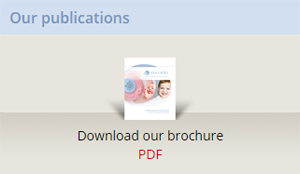Is it painful?
The procedure of egg collection is practically painless as it is done under intravenous analgesia (sedation) administered by the anaesthetist. Another reason why the egg collection should be done under sedation is to avoid any involuntary movement by the patient that could momentarily move the egg collection needle and cause damage to the ovary or other structures close to the ovary (uterus, intestine, a large blood vessel etc.)
An egg collection is usually a quick procedure, lasting about 10-30 minutes, depending on the number of the follicles, the degree of difficulty of the aspiration etc. The patient usually needs to stay in the recovery room for a further 30 minutes to 1 hour to rest and allow the staff to ensure that they are well enough to leave the Unit.
Before leaving the Unit, the patient is informed about the number of the eggs retrieved and will receive further instructions for the continuation of the treatment.
What preparations are necessary?
A light dinner the evening before the egg collection, shaving and cleansing of the outer genitals.
On the day of egg collection: you must refrain from eating or drinking, and must not have polished nails or perfume. It is advisable that your schedule is free for the morning of the egg collection.
You must arrive at the Unit at the specified time along with your partner, who will provide the sperm.
Is it dangerous?
There is a chance of trauma or inflammation of the internal organs, but it is estimated internationally to be minimal. In the hands of an experienced doctor this possibility is practically negligible or even zero. The surgery theatre is equipped with all the instruments needed for the anaesthetist to deal with every unexpected event in the best possible way.
Other information

Please note that the number of eggs retrieved may be smaller than the number of follicles visible with the ultrasound because some follicles may not contain any eggs (empty follicle syndrome).
The chance of no eggs collected due to a fault is minimal when the procedure is performed by experienced gynaecologists and embryologists. It is also possible for more eggs to be collected than what initially is expected, especially when the number of follicles in more than 8-10 in every ovary. This is due to the way the follicles are depicted: the image with an ultrasound has two dimensions and it is impossible for a follicle that is "behind" the one measured to be shown (however, when the follicle "at the front" has been aspirated, the one "behind" it that was initially covered could then show in the ultrasound).






























